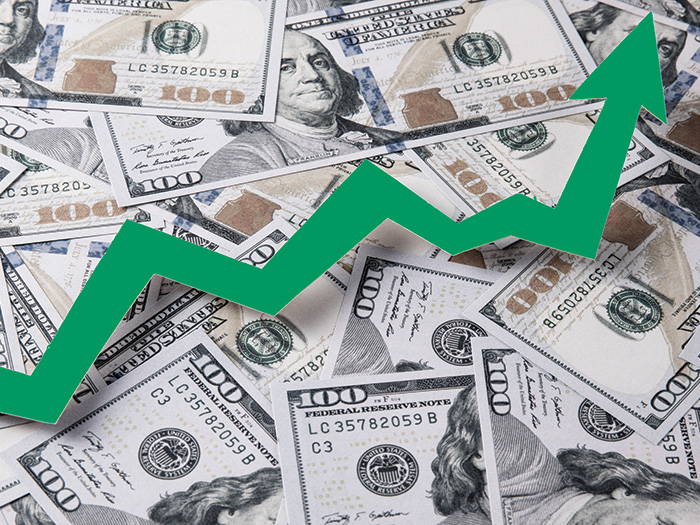Inflation Rising. How Workers’ Comp Premiums Will Fare

Runaway inflation has become the economic drumbeat that keeps getting louder as election midterms approach in November, but in the workers’ compensation sector, executives see an improved picture on the horizon for both medical and wage inflation — despite the multi-decade high in the consumer price index straining families’ wallets and patience.
As employers ratchet up pay and benefits to meet employee wage expectations in a tight labor market, premiums naturally rise, which is good news for workers’ compensation as a whole.
“Payroll is our exposure base, so seeing increases in payroll, whether it’s more jobs or more wages, has the same net effect. But in terms of how it spreads itself throughout a carrier’s book can vary. If in one bucket you have a million dollars of payroll with a hundred employees, and then in another bucket you have a million dollars in payroll and that was just extra wages being paid to people, the second bucket would generally affect a workers’ comp book more favorably,” said Matthew Zender, senior vice president of work comp strategy at AmTrust.
Employers and Employees Strike a Balance in a Strong Market
The latest NCCI numbers bear this out, with premiums increasing about one percent on average across all sectors, but with medical and indemnity claim severity expected to stay basically stable. Noting that the market is “strong and healthy” in its May 2022 State of the Line report, the rate maker of record also tallied a combined ratio of 87 — the eighth consecutive year of underwriting profitability.
Barry Lipton, practice leader and senior actuary at NCCI, said that employers shouldn’t be too concerned about premium increases tied to inflationary pressure on wages.
“If there was an affordability issue in workers’ compensation, the increased premium might present a concern to the employer,” Lipton said. “However, due to several years of favorable experience, NCCI’s filed loss costs have generally gone down in the last few years, minimizing upward pressure on premiums.”
An October 2021 report by the National Association of Social Insurance (NASI) supports Lipton’s perspective, noting that the cost to employers in terms of premiums per $100 of covered payroll is at a 20-year low. “So, while wage inflation is very impactful to workers’ comp benefits and premium, the impact is benign as benefits keep up with inflation and premium stays in balance with benefits automatically,” Lipton explained.
Adding to the relatively rosy outlook for insurers vis-à-vis sustainably higher premiums, there’s an anecdotal benefit for workplace safety.
“A hundred more employees milling around leads to more claims on average,” Zender said. “Extra wages for those individuals who are already with you leads to increased benefits for those workers when they get injured, so their weekly rates could go up, but it also leads to increased satisfaction.
“To the extent that satisfied employees are more prone to be working safely, [that] tends to have a positive effect. So, we tend to view wage growth with a bit of favor as an industry. We track it very closely, but on average it’s not a bad thing.”
The warnings of economic forecasters are not quite as dire in light of improved consumer expectations. According to a recent Federal Reserve Bank of New York survey, median inflation expectations for next year and three years from now plummeted in July.
The closely watched central bank reported that consumer inflation expectations were 6.8% for next year and 3.6% for three years from now in June, and in July had declined to 6.2% and 3.2%, respectively. The bank noted that these were broad observations across income groups but were more strongly correlated in lower income groups.
Medical Inflation Harder to Predict, Could Present Challenges
While the consumer price index (CPI) and wage inflation are valid markers, workers’ compensation executives also keep a close eye on medical inflation, which is the more likely culprit to increase overall costs.
“On the medical payments side, to the extent medical wages rise more quickly than wages in other sectors, that can drive an increase in medical payments at a faster pace than the premium increase,” said Jeff Cole, AVP of national accounts and FEMP for Sentry Insurance. However, as Cole noted, the current situation does not seem to follow that trend.
According to the Bureau of Labor Statistics July 2022 Employment Cost Index based on June numbers, medical wage inflation at 5.9% is about the same as the overall workforce, sitting at 5.3%. Further, the last three months saw just a 1.1% increase, with health care actually slightly less than the overall workforce wage increase of 1.4%.
“All in all, I’d expect the industry to see more [premiums] and more losses, but probably similar loss ratios,” said Cole.
That dynamic could shift, though.
“Medical inflation typically exceeds the consumer price index. It’s been an issue for as long as I’ve been involved in workers’ comp and group health,” said Joseph Berardo Jr., CEO of Carisk.
“When you look at wage inflation in addition to COVID money drying up, there are hospital systems now — who already suck up 60 to 70% of the dollars that are spent in an episode of care — that are big and for profit, and these guys are aggressively going after the group health side of the business with double-digit increases on contract renewals.
“What the industry knows but doesn’t talk about on the comp side is that comp and auto tend to be the afterthought, so if they’re going to put a big increase on a big health plan, the comp side is probably going to see something that’s going to be in the mid-teens.”
Berardo said expenses in workers’ comp health care come down to frequency times unit cost.
“This is especially true in states where there’s no statutory fee schedule,” he said. “Regulators haven’t caught up, so we’re being shielded at this point, but I do think in the next two to three years we’ll see that creep up tremendously.”
Contrary to the CPI, the producer price index (PPI), as a measurement of the cost of output, complicates the medical inflation picture, to Berardo’s point. July 2022 Bureau of Labor Statistics numbers analyzed by the St. Louis Federal Reserve Bank show a selected health care industry PPI of 136.785%.
The Fed’s recent interest rate hikes have stoked fears of a recession among workers’comp thought leaders.
“As far as a recession goes, in the financial services sector or more broadly, it is hard to create a soft landing from such a high level of inflation,” Cole explained.
This could prove to be problematic in the future, eroding gains in indemnity benefits in the future, even as payroll remains a virtuous exposure base for the workers’ comp line of business in the larger property casualty risk transfer market. &











